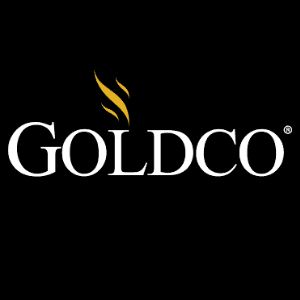Disclosure: We are a reader supported site. When you invest through our links, we may earn a small commission at no extra cost to you.
Gold has long been considered a safe-haven asset that investors flock to during times of economic uncertainty. For many, investing in gold not only offers the prospect of capital appreciation but also acts as a hedge against inflation and currency fluctuations. With the rise of the Individual Retirement Account (IRA) that allows for gold as a permissible investment, many investors are now considering gold as part of their retirement strategy.
However, as with any investment, there are specific tax rules and considerations that one must be aware of. In this article, we’ll delve deep into the intricacies of the Gold IRA tax rules, fees associated with Gold IRAs, and other crucial factors every investor should consider.
Key Takeaways
- Gold IRAs have specific tax advantages similar to traditional IRAs but come with unique rules regarding the type and storage of gold.
- Fees associated with Gold IRAs can vary based on the custodian and storage options.
- Rollover from a traditional IRA or 401k to a Gold IRA can be a tax-free process if done correctly.
Gold IRA Tax Rules
A Gold IRA, akin to a traditional or Roth IRA, comes with a set of tax rules and benefits that can potentially optimize an investor’s returns. By understanding these rules in-depth, investors can take full advantage of the benefits while navigating potential pitfalls. Here’s a comprehensive look at the tax rules governing Gold IRAs:
Tax-Deferred Growth
One of the primary benefits of a Gold IRA, like its traditional counterpart, is the tax-deferred growth.
- Compound Interest: With tax-deferred growth, your investment, including the capital gains and interest, can compound without annual tax implications. This allows your investment to grow at a faster rate than if it were subjected to annual taxes.
- Postponed Taxation: Taxes are not applied until you decide to take distributions. This means your gold investment can potentially appreciate over decades without any tax interference.
Distribution Taxes
Upon withdrawing from your Gold IRA:
- Ordinary Income Tax: Regardless of whether the gold has appreciated, any distribution taken will be taxed as ordinary income, which depends on your tax bracket at the time of withdrawal. This is in contrast to long-term capital gains taxes, which can often be lower.
- Inflation Consideration: The fact that the distribution is taxed as ordinary income can sometimes be a downside. If you’ve held onto the gold for decades, and it has appreciated significantly, inflation might decrease the purchasing power of your distributions.
Early Withdrawal Penalty
Understanding when and how you can access your Gold IRA without penalties is essential.
- 10% Penalty: Similar to traditional IRAs, if you make a withdrawal before the age of 59.5, a 10% early withdrawal penalty is applied on top of the ordinary income tax.
- Exceptions: There are specific scenarios, like a first-time home purchase or certain medical expenses, where the IRS might waive the 10% penalty.
Mandatory Distributions
While Roth IRAs do not require mandatory distributions, traditional and Gold IRAs do.
- Age 72 Requirement: Recently changed from age 70½ in the SECURE Act of 2019, Gold IRA holders must start taking Required Minimum Distributions (RMDs) by April 1st of the year following the year they turn 72.
- Tax Implications: These distributions are subject to ordinary income taxes. Failure to take RMDs can result in a 50% penalty on the amount that should have been withdrawn.
- In-Kind Distributions: Unique to Gold IRAs, if you do not want to sell the gold, some custodians might allow you to take physical possession of the gold as an in-kind distribution. However, taxes are still due on the value of the distribution.
In-Kind Distributions & Taxes
A feature that differentiates Gold IRAs from other IRAs is the ability to take distributions in-kind, which means in the form of the actual gold.
- Valuation: When taking an in-kind distribution, the value of the gold on the distribution day is what’s considered for tax purposes. This value will be taxed as ordinary income.
- Physical Possession: Post distribution, the gold is no longer part of the IRA, and you can take physical possession without any additional tax implications, unless you decide to sell the gold later.
Contributions and Deductions
Just as with traditional IRAs, there are limits to how much one can contribute annually to a Gold IRA.
- Deduction Limits: Depending on your income level and if you or your spouse are covered by a retirement plan at work, your Gold IRA contributions may or may not be fully deductible. Always consult the latest IRS guidelines or a tax professional to determine your exact situation.
- Contribution Limits: For 2021, the total contributions to all of your traditional and Roth IRAs can’t be more than $6,000 ($7,000 if you’re age 50 or older), or your taxable compensation for the year, if your compensation was less than this dollar limit.
While Gold IRAs offer potential growth and diversification, understanding the intricate tax rules is paramount. Before making any decisions, always consult with a tax professional or financial advisor familiar with Gold IRA regulations to ensure you are making informed choices.
Gold IRA Fees
Gold IRAs, with their unique nature, come with a specific set of fees that any prudent investor should be aware of. Investing in gold within an IRA structure provides certain tax advantages, but the costs associated with establishing, maintaining, and liquidating a Gold IRA can impact the overall return on investment. Let’s delve into these fees to equip investors with a comprehensive understanding:
Setup Fees
When initiating a Gold IRA, investors often encounter a one-time setup fee. This fee is levied to cover the administrative work required to establish your account.
- Varied Costs: Depending on the custodian, this fee can range anywhere from $50 to $200.
- Fee Waivers: Some providers might waive the setup fee if your initial investment surpasses a certain threshold.
Annual Maintenance Fees
These recurring fees are for the ongoing administration of your Gold IRA.
- Flat vs. Scaled: While some custodians charge a flat annual fee, others might base their fee on the account size, which means as your investment grows, so does the fee.
- Typical Range: Generally, investors can expect to pay anywhere from $50 to $300 per year, but it’s crucial to confirm with individual providers.
Storage Fees
Storing physical gold securely is paramount for Gold IRAs, and this security comes at a cost.
- Depository Choice: Gold in an IRA must be held in an IRS-approved depository. Some custodians offer a choice of depositories, while others may have preferred arrangements.
- Segregated vs. Non-Segregated:
- Segregated Storage means your gold is stored in a separate space designated only for your assets. This often comes at a higher fee.
- Non-Segregated Storage means your assets are stored alongside those of other investors.
- Fee Structure: Like maintenance fees, storage fees can be flat or scaled. On average, these fees range from $100 to $500 annually, depending on the storage type and depository.
Brokerage Fees
When buying or selling gold within your IRA, you’ll likely encounter brokerage fees.
- Spreads: Instead of a straightforward fee, some custodians and dealers profit from the spread—the difference between the price at which gold is bought and sold.
- Transparency is Key: It’s crucial to understand these costs upfront, as they can vary considerably and might significantly affect your investment’s net value.
Transfer and Rollover Fees
If you decide to transfer or rollover funds from one Gold IRA custodian to another, or from a traditional IRA to a Gold IRA, there might be associated fees.
- Custodian Charges: Some custodians might charge for transferring out assets or liquidating gold holdings.
- Avoiding Pitfalls: It’s crucial to clarify any such fees in advance, especially if you anticipate the need for flexibility in managing your investments.
Liquidation Fees
When it’s time to sell your gold holdings and withdraw or move your funds, some custodians might charge a liquidation fee.
- Cost Implications: This fee can either be a flat charge or a percentage of your total assets. Either way, it can impact your returns, especially if you’re liquidating a significant amount.
Potential Hidden Fees
It’s paramount to thoroughly read the agreement with your Gold IRA custodian. Some might have:
- Paperwork Fees: For processing various forms or transactions.
- Outgoing Wire Fees: If you’re moving funds electronically.
- Research Fees: If you require special services or research from your custodian.
While Gold IRAs offer a unique opportunity to diversify one’s retirement portfolio with tangible assets, the associated fees can influence the overall profitability. Thorough research, understanding the fee structure of your chosen custodian, and occasionally revisiting the cost-benefit analysis can help in maximizing your Gold IRA’s potential.
Other Factors to Consider About Gold IRAs
Gold IRAs offer an exciting opportunity for investors to diversify their retirement portfolios with tangible assets. But beyond tax rules and fees, there are myriad other considerations that can influence the decision to invest in a Gold IRA. Let’s shed light on some of these pivotal factors:
Type of Precious Metal
While popularly known as Gold IRAs, these self-directed IRAs don’t restrict you to only investing in gold.
- Variety of Metals: Apart from gold, many Gold IRAs permit the inclusion of silver, platinum, and palladium.
- Purity Standards: Each metal has a minimum fineness standard set by the IRS, e.g., gold must be at least 99.5% pure, while silver should be 99.9% pure.
Physical Asset Storage
The tangible nature of Gold IRAs necessitates specific storage requirements, which differ from regular securities-based IRAs.
- IRS-Approved Facilities: Gold and other precious metals in an IRA must be stored in secure, IRS-approved depositories. Personal storage at home is not permissible.
- Insured Storage: Ensure that the storage facility provides adequate insurance coverage against potential risks like theft, damage, or natural disasters.
Liquidity and Selling
While gold holds intrinsic value, it’s essential to understand its liquidity within an IRA structure.
- Selling Process: Gold in an IRA cannot be easily liquidated as stocks. There might be a waiting period, and the process can be subject to various fees.
- Market Fluctuations: The value of gold is subject to market dynamics. While it is often viewed as a hedge against economic downturns, it can still experience periods of volatility.
Diversification Strategy
Gold, or any precious metal, should be considered a part of a broader investment strategy.
- Balanced Portfolio: Financial advisors often recommend a diversified portfolio to mitigate risks. Determine what percentage of your portfolio you want in precious metals based on your risk tolerance and financial goals.
- Not a Panacea: While gold can act as a hedge against inflation or economic downturns, it is not guaranteed to always rise in value.
Regulatory Changes
Given that Gold IRAs are subject to IRS regulations, any changes in these rules can impact your investment.
- Stay Informed: Regularly review IRS guidelines and stay abreast of potential legislative changes that might affect Gold IRAs.
- Consult Professionals: It’s advisable to seek guidance from tax or financial advisors familiar with Gold IRAs to navigate regulatory complexities.
Due Diligence on Custodians
Choosing the right custodian is pivotal for managing your Gold IRA efficiently.
- Reputation: Opt for custodians with a track record of reliability, transparency, and excellent customer service.
- Fees: As discussed previously, understand all potential fees, ensuring there are no hidden charges.
- Educational Resources: Some custodians provide valuable educational materials, webinars, or seminars, aiding investors in making informed decisions.
Economic Climate
The broader economic landscape can influence the appeal of precious metals.
- Inflation Concerns: Historically, gold has been seen as a hedge against inflation. If the economy is showing signs of inflationary pressures, this might increase gold’s appeal.
- Economic Instability: During periods of economic uncertainty, recession, or geopolitical tensions, tangible assets like gold often become more attractive.
In essence, while Gold IRAs present a unique avenue for diversifying one’s retirement assets, they also come with distinct considerations. Proper due diligence, an understanding of the nuances of tangible asset investment, and periodic consultation with financial experts can ensure that a Gold IRA complements an investor’s retirement strategy effectively.
401k or IRA to Gold IRA Rollover
Investors seeking a more diversified retirement portfolio often contemplate the potential benefits of including precious metals like gold. One common method is by rolling over a portion or all of a traditional 401k or IRA into a Gold IRA. Before undertaking this move, it’s essential to understand the steps, benefits, and possible implications.
Understanding the Rollover Process
A rollover involves transferring funds from a traditional retirement account to a Gold IRA. Here’s a step-by-step guide:
- Establish a Self-Directed IRA: This is the type of IRA that permits the inclusion of alternative assets like gold. Choose a reputable custodian who specializes in Gold IRAs.
- Initiate the Rollover: Contact the administrator of your current 401k or IRA to begin the transfer process. They will provide guidance on the paperwork and details required.
- Choose Your Precious Metals: Once the funds are in the new Gold IRA, collaborate with a dealer to select the gold or other metals you wish to purchase.
- Secure Storage: Your precious metals are stored in an IRS-approved depository until you decide to take a distribution or sell.
Direct vs. Indirect Rollover
There are two primary methods to transfer funds:
- Direct Rollover: The money moves directly from your old retirement account to the Gold IRA without you touching it. This process is seamless and doesn’t incur immediate tax implications.
- Indirect Rollover: The funds from your old retirement account are first sent to you. You then have 60 days to deposit them into your Gold IRA. Failing to do so within the timeframe subjects the amount to taxes and possible penalties.
For simplicity and to avoid potential pitfalls, a direct rollover is often recommended.
Benefits of a 401k or IRA to Gold IRA Rollover
- Diversification: Rolling over a portion of your traditional IRA or 401k to gold allows you to diversify your investment portfolio, mitigating risks associated with traditional markets.
- Hedge Against Inflation: Historically, gold has acted as a protection mechanism against economic downturns and inflation, preserving wealth over long periods.
- Tangible Asset: Gold is a real, tangible asset, which can be particularly comforting for investors wary of intangible investments.
Things to Consider
- Eligibility: Not all 401k plans permit a rollover. Often, active employees with a current 401k might not have this option. However, former employees or those with old 401k accounts from previous employers typically can.
- Tax Implications: A direct rollover generally avoids immediate tax consequences. Still, always consult with a tax professional to understand any future implications, especially when taking distributions.
- Rollover Limits: There is no limit to the amount you can roll over from a 401k or IRA to a Gold IRA. However, remember annual contribution limits still apply for additional direct contributions.
Selecting the Right Custodian
Your Gold IRA custodian plays a critical role. Consider the following when making a choice:
- Experience: Opt for custodians with a proven track record in Gold IRAs.
- Transparency: Ensure clear communication regarding fees, storage options, and any other charges.
- Educational Resources: A good custodian often provides resources to help investors stay informed.
Rolling over a traditional 401k or IRA to a Gold IRA can be an excellent way to diversify and safeguard your retirement assets. As with any financial decision, thorough research, understanding the nuances of the process, and seeking advice from financial and tax professionals can guide you in making an informed choice.
Why We Recommend Goldco for Gold IRAs
Goldco has some of the highest marks across the industry for customer service and integrity, including an A+ Rating from the Better Business Bureau.
- A+ Rating from Better Business Bureau
- AAA Rating from Business Consumer Alliance
- Get up to $10,000 in Free Silver with Qualifying Purchase
- Easy 3-Step Process to Get Started
"The crew at GoldCo are professional and accommodating, extremely helpful and very easy to work with. My service rep, Tony Pino, was always available and willing to answer/explain any questions. Highly recommend them." -Mark G.
Goldco stands out in the crowded field of Gold IRA providers due to its:
- Expertise: With years of experience in the industry, Goldco has a proven track record of assisting clients with Gold IRA investments.
- Transparency: Goldco offers transparent pricing with no hidden fees.
- Excellent Customer Service: With knowledgeable representatives, Goldco ensures that all your questions get answered.
- Educational Resources: Goldco provides clients with resources to make informed decisions.
Summary
Incorporating gold into your retirement strategy via a Gold IRA can be a wise decision to diversify and hedge against economic uncertainties. However, it’s essential to be aware of the specific tax rules, fees, and other considerations associated with Gold IRAs. And if you’re looking to roll over your existing IRA or 401k to a Gold IRA or are starting fresh, Goldco offers a trusted and transparent platform for your precious metal investments. As always, consult with a financial advisor before making any decisions to ensure that a Gold IRA aligns with your financial goals and objectives.





